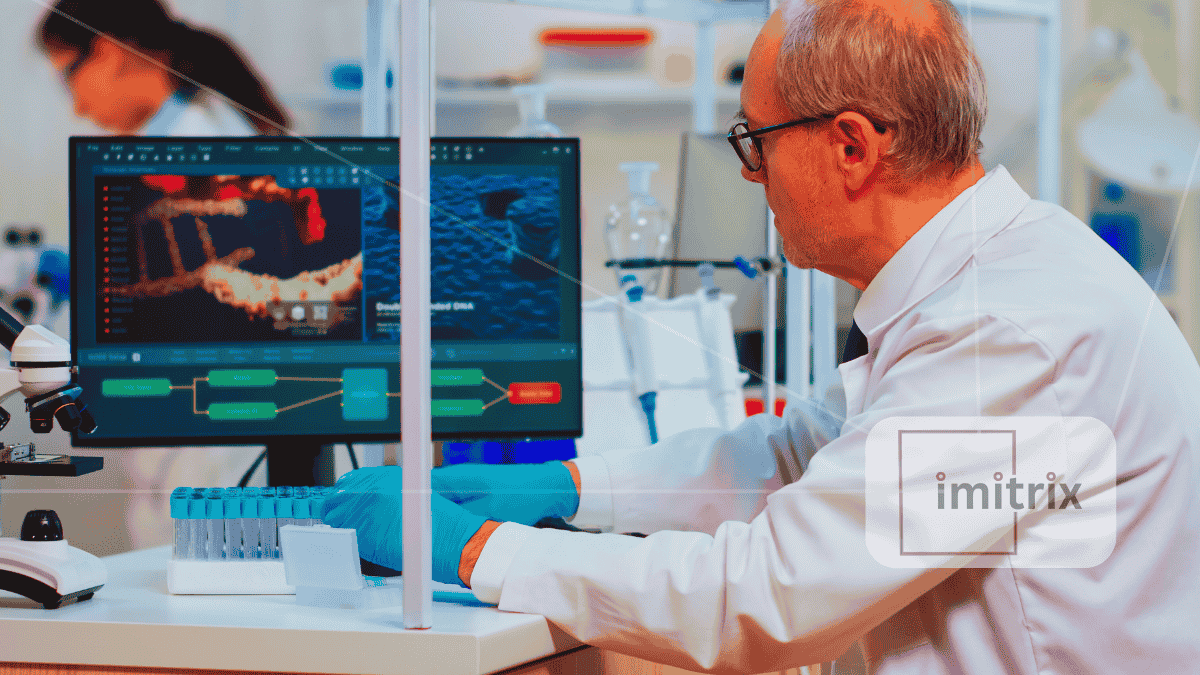The traditional process of drug discovery is slow, expensive, and complex. It can take over a decade and billions of dollars to bring a new drug to market. But that paradigm is changing. Artificial intelligence (AI) is transforming the pharmaceutical industry by accelerating the way drugs are discovered, developed, and tested. In this article, we’ll explore how AI in drug discovery is speeding up breakthroughs, cutting costs, and opening up new possibilities for treating diseases.
The Challenge of Traditional Drug Discovery
Drug discovery involves identifying potential compounds, testing them in preclinical trials, and then progressing through a series of clinical trial phases. This process is not only lengthy, but it also has a high failure rate. For every 10,000 compounds screened, only about one will make it to market. Most fail due to issues with efficacy, toxicity, or poor bioavailability. Each failure adds to the overall cost of drug development.
Moreover, many diseases still lack effective treatments because of the complexity of their biology. Traditional research methods often fall short in identifying targets or compounds that can be translated into viable drugs.
Enter Artificial Intelligence
AI brings powerful computational capabilities to the table. By analyzing vast datasets, recognizing patterns, and making predictions, AI can drastically reduce the time and cost of discovering new drugs. Algorithms can sift through millions of molecular structures, identify likely drug candidates, predict their interactions, and even simulate clinical trial outcomes.
AI in drug discovery is not just about automation. It’s about augmentation—helping scientists uncover insights they would otherwise miss. From target identification to molecule design, AI is proving to be a valuable partner in the lab.
Key Areas Where AI Is Making a Difference
1. Target Identification and Validation
One of the first steps in drug development is identifying the right biological target, such as a protein or gene involved in a disease. AI models can analyze genomic, proteomic, and transcriptomic data to pinpoint potential targets more accurately than manual methods. This helps reduce the time spent on trial-and-error approaches.
2. Drug Candidate Screening
Once a target is known, the next step is finding molecules that interact with it. Traditional high-throughput screening is expensive and labor-intensive. AI-powered virtual screening can analyze compound libraries much faster. These models predict how well a molecule will bind to a target and suggest which compounds to test in the lab.
3. De Novo Drug Design
AI can generate entirely new molecular structures with desired properties. Using generative models, researchers can design molecules optimized for potency, safety, and pharmacokinetics. This accelerates the discovery of novel drugs, especially in areas where existing treatments are limited.
4. Predicting Drug-Drug Interactions and Side Effects
Safety is a major concern in drug development. AI can help by predicting potential side effects or harmful drug-drug interactions before clinical trials. By analyzing past data, AI systems can flag high-risk compounds early, saving time and resources.
5. Clinical Trial Optimization
AI models are being used to improve clinical trial design. They can identify suitable patient populations, optimize dosing strategies, and even predict trial outcomes. This leads to more efficient trials and a higher likelihood of success.
Real-World Examples of AI in Drug Discovery
Several companies and research institutions have already made significant strides using AI in drug discovery.
- Insilico Medicine used AI to identify a new drug candidate for fibrosis in just 46 days, a process that would typically take years.
- Atomwise applies deep learning to predict the binding of small molecules to protein targets. Its platform has been used in partnerships with major pharmaceutical firms.
- DeepMind’s AlphaFold system has revolutionized protein structure prediction, a crucial part of understanding how drugs interact with their targets.
These examples highlight the potential of AI not only to speed up drug development but also to tackle previously “undruggable” diseases.
Benefits of AI in Drug Discovery
The benefits of integrating AI into the drug discovery process are numerous:
- Speed: AI can compress years of research into weeks or even days.
- Cost-Effectiveness: By reducing trial-and-error steps, AI lowers development costs.
- Accuracy: AI improves the precision of target identification and molecule selection.
- Scalability: AI can analyze data at a scale no human team could match.
- Innovation: AI opens doors to novel drug classes and personalized medicine.
Challenges and Limitations
Despite its promise, AI in drug discovery is not without challenges. Data quality remains a critical issue. Many models rely on historical data, which can be biased, incomplete, or inconsistent. There’s also a need for better integration between AI experts and domain scientists. Collaboration is key to translating algorithmic predictions into actionable insights.
Regulatory acceptance is another hurdle. While agencies like the FDA are becoming more open to AI-driven methods, there’s still a lack of standardized frameworks for evaluating these tools.
The Future of AI in Drug Discovery
As technology advances, AI will become even more embedded in drug development workflows. The integration of AI with other cutting-edge technologies—like quantum computing, CRISPR, and organ-on-chip systems—will create even more powerful tools for innovation.
One promising direction is personalized medicine. AI can help tailor treatments based on individual genetic profiles, leading to more effective and less toxic therapies. Another area is the use of AI in rare disease research, where data is limited and traditional approaches often fail.
Open science initiatives and shared datasets will also play a role in democratizing access to AI tools, allowing smaller companies and academic institutions to contribute to drug discovery.
Conclusion
AI in drug discovery is more than a buzzword—it’s a revolution. By automating complex tasks, uncovering hidden patterns, and predicting outcomes, AI is transforming how new medicines are found and brought to market. While challenges remain, the potential rewards are enormous: faster development, lower costs, and better treatments for patients worldwide.
As we continue to integrate AI into the heart of pharmaceutical R&D, one thing is clear: the future of drug discovery will be faster, smarter, and more efficient than ever before.

